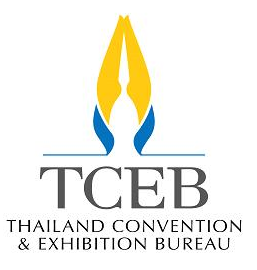Keynote Speakers
 |
||
| Optimized Assistive Human-robot Interaction Using Reinforcement Learning | ||
| Prof. Frank LEWIS | ||
| University of Texas at Arlington, USA | ||
|
Abstract: Co-robotics involves humans and robots working together safely in the same shared space as a team. This motivates physical Human-Robot Interaction (HRI) systems that adapt to different humans and have guaranteed robustness and stability properties. For modern interactive HRI systems to be capable of performing a wide range of tasks successfully, it is required to include the effects of both the robot dynamics and the human operator dynamics. In this talk we propose three adaptive HRI control systems that assist the human operator to perform a given task with minimum human workload demands and improved overall human-robot system performance.
Human performance neuropsychological and human factors studies have shown that in coordinated motion with a robot, human learning has two components. The operator learns a robot-specific inverse dynamics model to compensate for the nonlinearities of the robot, and simultaneously learns a feedback control component that is specific to the successful performance of the task. These foundations can be incorporated in the design of HRI control systems that include the effects of both the robot dynamics and the human dynamics by using a 2-loop design procedure.
Therefore, in this talk, we develop an adaptive HRI control structure consisting of two control loops. First, a robot-specific neuro-adaptive controller is designed in the inner loop to make the unknown nonlinear robot behave like a prescribed robot impedance model as perceived by a human operator. In contrast to most existing neural network and adaptive impedance based control methods, no information of the task performance (e.g. specifically no reference trajectory information) is required in the inner loop. Then, a task-specific outer-loop controller is designed to find the best parameters of the prescribed robot impedance model to adjust the robot’s dynamics to the operator’s skills to effectively perform a given task. The outer loop includes the human operator dynamics and all the task performance details.
Given the inner-loop neuro-adaptive robot controller, three different outer loop designs are given for robot-assisted task performance. One task loop design is given based on model reference adaptive control, one based on adaptive inverse filtering, and one that uses reinforcement learning to optimize robot performance in human assistance. Simulation results show that the adaptive HRI schemes are responsive and robust to changes in both human and robot models. Further experimental results on a PR2 robot demonstrate the effectiveness of this approach in using the robot to improve the human’s performance of a motion task.
Biography: F.L. Lewis, Member, National Academy of Inventors. Fellow IEEE, Fellow IFAC, Fellow U.K. Institute of Measurement & Control, PE Texas, U.K. Chartered Engineer. UTA Distinguished Scholar Professor, UTA Distinguished Teaching Professor, and Moncrief-O’Donnell Chair at The University of Texas at Arlington Research Institute. Qian Ren Thousand Talents Consulting Professor, Northeastern University, Shenyang, China. IEEE Control Systems Society Distinguished Lecturer. He obtained the Bachelor's Degree in Physics/EE and the MSEE at Rice University, the MS in Aeronautical Engineering from Univ. W. Florida, and the Ph.D. at Ga. Tech. He works in feedback control, reinforcement learning, intelligent systems, and distributed control systems. He is author of 7 U.S. patents, 327 journal papers, 411 conference papers, 20 books, 44 chapters, and 11 journal special issues. Received IEEE Computational Intelligence Society Neural Networks Pioneer Award 2012, AIAA Intelligent Systems Award 2016. He received the Fulbright Research Award, NSF Research Initiation Grant, ASEE Terman Award, Int. Neural Network Soc. Gabor Award 2009, U.K. Inst Measurement & Control Honeywell Field Engineering Medal 2009. Distinguished Foreign Scholar, Nanjing Univ. Science & Technology. Project 111 Professor at Northeastern University, China. Received Outstanding Service Award from Dallas IEEE Section, selected as Engineer of the Year by Ft. Worth IEEE Section. Listed in Ft. Worth Business Press Top 200 Leaders in Manufacturing. Received the 2010 IEEE Region 5 Outstanding Engineering Educator Award and the 2010 UTA Graduate Dean’s Excellence in Doctoral Mentoring Award. Elected to UTA Academy of Distinguished Teachers 2012. Texas Regents Outstanding Teaching Award 2013. He served on the NAE Committee on Space Station in 1995. Founding Member of the Board of Governors of the Mediterranean Control Association. Helped win the IEEE Control Systems Society Best Chapter Award (as Founding Chairman of DFW Chapter), the National Sigma Xi Award for Outstanding Chapter (as President of UTA Chapter), and the US SBA Tibbets Award in 1996 (as Director of ARRI’s SBIR Program).
http://www.uta.edu/utari/acs/ |
||
 |
||
| Aerial Robotic Manipulation | ||
| Prof. Bruno SICILIANO | ||
| University of Naples Federico II, Italy | ||
|
Abstract: The latest years have seen a growing interest of the research community towards the field of aerial robotics. Unmanned aerial vehicles (UAVs) are often employed in several passive application scenarios such as inspection, surveillance, and so on. Nowadays, active tasks such as grasping and manipulation of objects in unknown environments have become possible. Three aspects of this scenario are addressed in this keynote talk: visual servoing for pre-grasping and deploying/assembly tasks, Cartesian impedance control for UAVs equipped with a robotic arm, and design of a lightweight robotic arm for a micro-UAV.
Biography: Bruno Siciliano is Professor of Control and Robotics, Director of the Interdepartmental Center for Advanced Robotics in Surgery (ICAROS) and Director of the PRISMA Lab in the Department of Electrical Engineering and Information Technology at University of Naples Federico II. His research interests include force and visual control, human-robot interaction, aerial and service robotics. He has co-authored 7 books, 85 journal papers, 250 conference papers and book chapters. He has delivered 150 invited lectures and seminars at institutions worldwide, and he has been the recipient of several awards including the recent 2015 IEEE Robotics and Automation Society (RAS) George Saridis Leadership Award in Robotics and Automation. He is a Fellow of IEEE, ASME and IFAC. He has served on the editorial boards of several peer-reviewed journals and has been chair of program and organizing committees of several international conferences. He is Co-Editor of the Springer Tracts in Advanced Robotics, and of the Springer Handbook of Robotics, which received the PROSE Award for Excellence in Physical Sciences & Mathematics and was also the winner in the category Engineering & Technology. His group has been granted fifteen European projects in the last eight years including an Advanced Grant from the European Research Council. Professor Siciliano is the Past-President of IEEE RAS.
|
||
 |
||
| Towards Wholistic Scene Understanding | ||
| Prof. Philip TORR | ||
| University of Oxford, United Kingdom | ||
|
Abstract: Within this talk I shall describe recent work within the group to combine work on deep learning with our previous work on Markov Random Fields,resulting in deep structured models. Our first work on this which cast conditional random fields as recurrent neural networks wasfor a long while the top performer on the PASCAL VOC semantic segmentation dataset and inspired several other methods. I shall also describe more recent workto extend this framework to instance level segmentation rather than just category level.
In order to easily acquire training data I will describe Semantic Paint, a system we developed that makes a natural user interface for data labelling and give some applications in two new start ups I am involved in: FiveAI for autonomous driving and Oxsight for augemented reality for the partially sighted.
Biography: Philip TORR did his PhD (DPhil) at the Robotics Research Group of the University of Oxford under Professor David Murray of the Active Vision Group. He worked for another three years at Oxford as a research fellow, and is currently a Visiting Fellow in Engineering Science at the University of Oxford, working closely with Prof. Zisserman and the Visual Geometry Group.
He left Oxford to work for six years as a research scientist for Microsoft Research, first in Redmond USA in the Vision Technology Group, then in Cambridge UK founding the vision side of the Machine learning and perception group. He was Professor in in Computer Vision and Machine Learning at Oxford Brookes University, now he is full Professor in Engineering at Oxford University. He is a Royal Society Wolfson Research Merit Award Holder. He was program co-chair for ICCV 2013. Recently the segmentation work of his group was used in the Sony Wonderbook.
|
||




